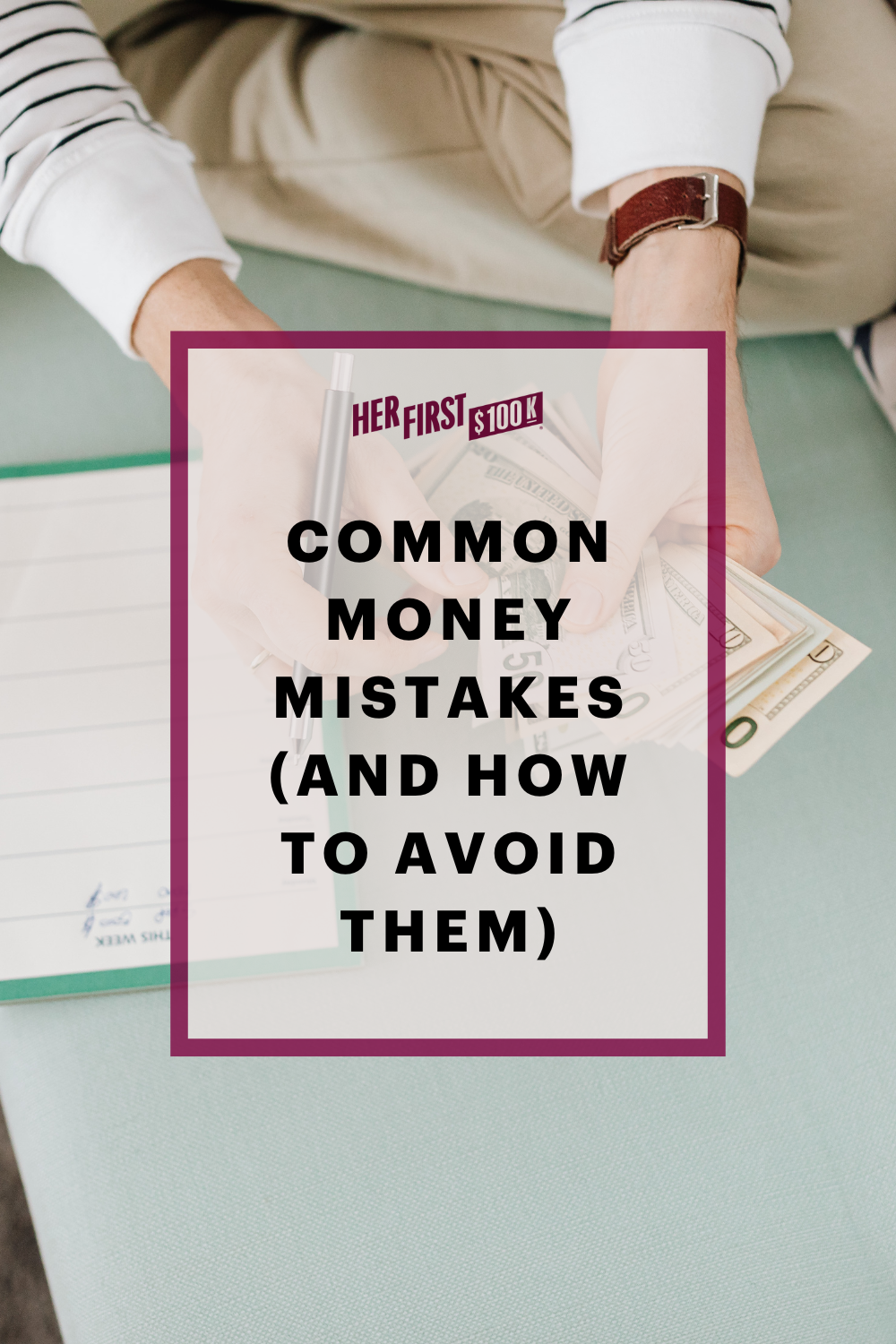The following article may contain affiliate links or sponsored content. This doesn’t cost you anything, and shopping or using our affiliate partners is a way to support our mission. I will never work with a brand or showcase a product that I don’t personally use or believe in.
Spoiler alert—I’m not perfect. I had to make my own money mistakes to learn what to watch out for. But there’s some good news here—you don’t have to make the same mistakes!
I’m sharing some of the most common financial oversights and fumbles I’ve either seen others make or made myself. Debunking common investing myths is a major step in trusting your financial game plan.
But first, a quick reminder—if you’ve made some of these mistakes yourself, PLEASE don’t beat yourself up about it. We’re all just learning how to get our financial shit together—no one is perfect.
Mistake #1: Not automating your savings or investments
Automations are your best friend for wealth building. Seriously. Even the most type-A among us can forget to move money from checking to savings or investment accounts.
From remembering your dog’s heartworm medications to making your grocery list, you probably have a million things to remember to do every day/week/month. Automating your savings and investing means you can have one less thing to put on your fucking to-do list.
For those of you who are like, “well it’s not that I forget, it’s that I don’t have anything left at the end of month to save,” then automating your savings is doubly important. It’s super common to start the month with good intentions, but then XYZ thing comes up and Zara has a sale and then suddenly it’s the 28th of the month and there’s nothing left over to save. (Cue sad trombone…womp womp womp…)
It doesn’t matter if you’re mentally overloaded and just forget to save, or if you’re someone who finds very little leftover to save at the end of the month—automating your savings is the answer.
You can start small, but by setting up a consistent transfer, you’re going to meet your goals far faster than you would otherwise.
Mistake #2: Putting your savings in a traditional savings account
Most traditional savings accounts offer extremely low interest rates. If you’re parking your savings in one of these accounts, you’re probably getting something around 0.01%–basically pennies.
You could be earning significantly more if you put your savings in a high-yield savings account (HYSA).
An HYSA is typically offered by online banks that have lower overhead than your typical brick-and-mortar bank. Lower overhead means you’re getting banking benefits with MUCH higher interest rates.
The HYSA I recommend also has no fees and no minimum balance requirements–score!
Mistake #3: Not funding your high-yield savings account
So you avoided mistake #2 and opened an HYSA––great!
Thing is, a lot of folks open the account without funding it (aka putting money in it).
You generally need direct deposit to get the best rates, and you know I’m a fan of automating those savings.
Mistake #4: Failing to invest funds in your retirement accounts
There’s a horror story I’ve heard way too many times—someone has diligently been saving money in an individual retirement account (IRA) for decades and then one day realized they never invested the money.
Their IRA—which should have been an incredible wealth-building tool—has been a glorified savings account with absolutely zero interest. I’m dead every time I hear this.
Don’t let this happen to you! Investing is a TWO-STEP PROCESS—first you deposit money into your IRA and then you buy your investments. Think of your IRA as an account that HOLDS your investments, not the investment itself.
Mistake #5: Going into debt for “fun” reasons
First, let me say: We Millennials and Gen-Zers are especially prone to FOMO—we’ve been raised in a culture of social media where sometimes it feels like everyone you know is flitting off to Mexico in February or throwing 30th birthday parties fit for a Vogue photoshoot.
And let me also be clear about this—spending money on yourself or a big experience is not a bad thing. Truly. If something brings you joy, it’s okay to go after it. But not at the expense of your financial well-being.
Instead of going into debt for fun experiences, set aside cash explicitly for these types of trips/events/etc. It’s called a sinking fund—setting aside money each month to fund a specific expense or goal, ideally in a high-yield savings account.
So if you really want to splurge on a trip with your friends for your 30th, start setting aside money now so you’re ready to pay for it when the time comes to play.
Mistake #6: Waiting too long to start investing
There’s a really common misconception among women that you have to have a lot of money to invest. Like, there’s some magic number out there that gives you the green-light to start investing.
I’m going to set the record straight. You do NOT need to have a lot of money to invest—and you’re missing out on wealth building if you wait.
There’s a saying in investing that time IN the market is more important than timING the market. This also goes for choosing when to start. The best time to invest is NOW, even if you only have a small amount to start.
Mistake #7: Picking individual stocks
Sometimes I see newer investors assume that investing means you should choose individual company stocks. That’s actually one of the riskier forms of investing, and while it’s an option, there are less risky ways to invest.
You can consider investing in index funds instead of individual stocks (or companies). An index fund is a group of companies or a group of stocks. Rather than putting all of your investing cash into one stock or company, you’re spreading it out amongst hundreds or thousands of companies.
Investing in index funds is one of the safer ways to invest, and it also made me a millionaire. You can learn more about it in Stock Market School, where I teach all about index fund investing.
Don’t let fear hold you back
While I wish I could help you prevent every money misstep, you’re bound to make mistakes. We all have moments of “I wish I knew this sooner.” What matters most is how you handle the challenges moving forward.
And give yourself some credit–you’re already taking action to learn about money and improve your financial future. Keep going! I’ll be here every step of the way.
Ready to feel financially whole?
For the first time EVER, I’m teaching ALL the strategies that have helped countless women save money, pay off debt, and grow their net worth (but really, feel happier, healthier, and more f*cking powerful).
In The $100K Club, you’ll get in-depth teaching from me, alongside every template I use to manage my own money, PLUS a community of champions to keep you accountable.



